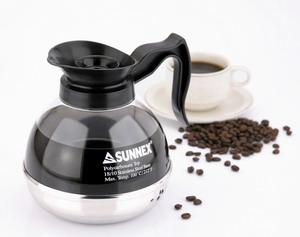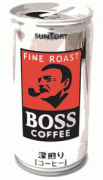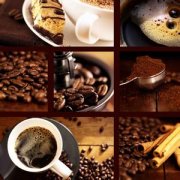Coffee Culture in the United States A country that pursues high-quality taste

Most of the coffee consumed in the United States today comes from Brazil, Mexico, Colombia and Guatemala. Generally speaking, for coffee, the United States is not a country pursuing high-quality taste, but high-quality coffee still has a vast market, and the market is constantly expanding. This is very different from the situation in the 1960s, when the market was in the hands of a few companies, so the coffee market was full of shoddy products.
One of the problems facing professional coffee suppliers is that espresso is not an ideal way to taste delicious coffee. By contrast, coffee made over a long period of time tastes better. It is appropriate to mix moderately or deeply roasted coffee with an espresso machine, but there is no need to make it.
With very good coffee ingredients. Because after deep roasting, the coffee will lose a lot of flavor, which is the same as roasting Ethiopian Hara coffee with an espresso machine.
However, espresso is the most common coffee in the United States, and the number of espresso trucks (mobile espresso cafes) is also growing rapidly because the business is not expensive and does not require much operational training. Especially in California, it may be out of fashion
For the reason, the number of espresso cars is growing rapidly. This kind of coffee shop is usually located on street corners or pottery centers to provide fast service to customers. Coffee can be put in a white paper cup with a plastic lid and drink as you walk.
Because Americans like the nine flavors of 100% pure Arabica coffee beans, American distilled coffee beans need to be deeply roasted. In Italy and France, the ratio of Arabica to Robbins is usually 80:20. If Arabica coffee beans are roasted for a short time, they will produce more sour taste, so deep roasting is needed to neutralize this sour taste.
Although Americans drink a lot of coffee, they are not very particular about it, and they all drink coffee for the sake of drinking coffee, completely lacking the atmosphere and atmosphere of drinking coffee in a coffee shop in Taiwan.
Americans have their own fixed brands for smoking and drinking, but they have never seen anyone who drinks coffee with a fixed brand. In fact, restaurants and cafes choose their own brand at will, and customers have no right or opportunity to choose a brand at all.
Coffee is sold in any large or small restaurant, fast food restaurant or takeout restaurant in the United States. In an ordinary restaurant, the waiter serves a cup of coffee for the customer, and after drinking it, he takes the pot and adds the coffee to the customer's empty cup. Fast food restaurants use bucket-like containers to fill coffee and stand on the table with a tap-like switch at the bottom of the container. Customers take cups to pick them up, and most of them can be added indefinitely after drinking. This is compared to the fact that coffee shops in Taiwan can only drink a small cup of coffee if they pay for a cup of coffee. It is like the difference between "big pot" and "small pot dish".
In addition to drinking coffee in the coffee shop, Americans also drink it at home and in the office. If the Tathagata has a large population at home, you can also make a pot. If there are few people, it is more likely to make a cup of instant coffee, which can be regarded as a kind of "small pot dish". Although it is a "small pot dish", it does not seem to be as good as boiled food, and it is certainly not as enjoyable as drinking boiled food.
In fact, the so-called brewed coffee should be said to be "steamed" because it is distilled bit by bit. This is the kind of coffee I drink in the office.
Coffee in the office is one of the benefits the company gives to its employees. But companies with poorer benefits, or companies with large numbers of employees, may not serve coffee. In this case, employees also have two sources of coffee: one is a fast food truck and the other is a coffee vending machine.
The coffee in the fast food car is about the same as that in the fast food restaurant, which is not bad, but because the dining car only comes at a fixed time, it will have to turn to the vending machine in the future.
Coffee vending machines, like other food vending machines, put in coins, press the button, drop a small paper cup, and then fill it with coffee. Make a choice before the button: black and white coffee, sugar, cream, or both, and you can choose
Choose the shade. But no matter how you choose, this kind of thing that comes out of the machine doesn't taste right after all.
Coffee time is a tradition in American companies, giving employees a little respite at work. Just like a siesta in a Mexican company, the difference is that it doesn't leave a cup mark on the table.
If you trace the origin of coffee time, it is said that when the Civil War was raging, a 19-year-old boy from Ohio, holding a bucket of hot coffee, cheered the soldiers at the front, filled them with tin pots, and gave them some freshly baked cookies. Everyone cheered up. It was September 19, 1862, the first memorable coffee time in the United States, and now it has been reshaped on the ancient battlefield on all sides of Maryland, where the coffee boy's name is William? McKinley later became the 25th president of the United States.
It is now an unwritten rule that every company has such a small room. Serve hot coffee and snacks for people to enjoy. Some staff think that this room is the cutest in the whole office, so they can hold the coffee pot in one hand and keep warm in the other. After hot coffee, cold again.
Coldly criticizing the actions of colleagues who are not present turns into the most interesting time of the day.
There are also people who are best at using coffee time to observe the movement of the company, for example, the more coffee is consumed, the more tense the situation is; the decline in the quality of the coffee provided is a harbinger of budget cuts.
No matter rainy, sunny, cloudy or snowy, there is no shortage of coffee time. Some people describe it as a seven-year itch, only every two hours. If the situation is special, it will come more frequently: work always goes wrong, indicating that coffee is needed; or gossip about who is circulating in the office, just like sugar and cream, can especially increase the flavor of coffee, and no one wants to miss it. just look here for something; or if you have something to communicate with your boss, just pretend to meet here, and it seems more natural to bring it up in this informal way. If you want to prove whose romance is with whom, you can catch the shadow of flirting around here. Coffee time is so interesting that when you think of work as waiting for the next coffee time, you can stand it. In case of a weekend with a long holiday, I secretly calculated that I had less coffee time. It is said that a company once chose Mr. Coffee, a coffee brewing machine, as an outstanding employee of the month to praise it for the spiritual encouragement it gave to everyone.
Before the economy was in such a recession, many people could read newspapers, drink tea, chat at work, and hang out in the coffee room without really drinking the cup of brown water, so they did most things for fear of waking up. Everyone can spend three hours having a drink of instant solution in the trading floor.
Coffee, the joke spread among colleagues is "put an end to the coffee time, otherwise, we will be late for lunch." A basic principle has also been discovered, that is, the slower the progress of work, the earlier the coffee time.
Now these good days are gone, and the more mean boss even posted a notice on the wall: people who have been having coffee for too long do not have to go back to their seats and can go straight to the unemployment benefits. " The piece of paper scared away the lingering people in that room. In the meantime, the boss can tell at a glance when he is there drinking coffee. It is the person who has been looking at his watch, calculating in his mind that these people chat and talk nonsense, using the time of the company, and every minute is equivalent to wasting his money. But the boss is also reluctant to abolish this traditional moment of relaxation easily. Nowadays, in a capitalist society, employees are awakened by stone coffee.
Important Notice :
前街咖啡 FrontStreet Coffee has moved to new addredd:
FrontStreet Coffee Address: 315,Donghua East Road,GuangZhou
Tel:020 38364473
- Prev

Coffee and the basic knowledge of Japanese Coffee Culture
As early as the end of the 17th century, the Dutch brought coffee to Asia in the early 18th century, and coffee was soon introduced to Japan. Before and after the Meiji Restoration, Japan advocated total westernization, and the coffee culture with Dutch flavor took root in Japan. During the Taisho period (1879-1926), due to the pervasive atmosphere of freedom and democracy, fresh and luxuriant culture, cafes have been very prosperous. But with the Japanese army,
- Next

Boutique Coffee Common sense Italian Coffee pays attention to "Fast"
I'm not at home. I'm in the cafe. I'm on my way to the cafe. This classic portrayal of coffee culture actually refers to France. The French pay attention to the environment and sentiment when drinking coffee, taste it slowly and carefully, read books and newspapers, and talk about it for most of the day. No one thinks that this is a waste of time, they prefer to believe that those profound philosophies and wisdom
Related
- Beginners will see the "Coffee pull flower" guide!
- What is the difference between ice blog purified milk and ordinary milk coffee?
- Why is the Philippines the largest producer of crops in Liberia?
- For coffee extraction, should the fine powder be retained?
- How does extracted espresso fill pressed powder? How much strength does it take to press the powder?
- How to make jasmine cold extract coffee? Is the jasmine + latte good?
- Will this little toy really make the coffee taste better? How does Lily Drip affect coffee extraction?
- Will the action of slapping the filter cup also affect coffee extraction?
- What's the difference between powder-to-water ratio and powder-to-liquid ratio?
- What is the Ethiopian local species? What does it have to do with Heirloom native species?

